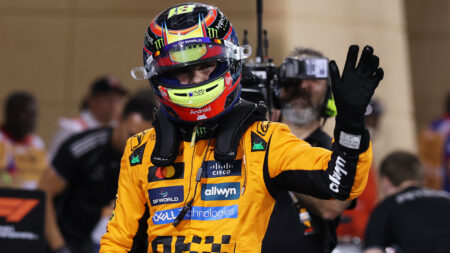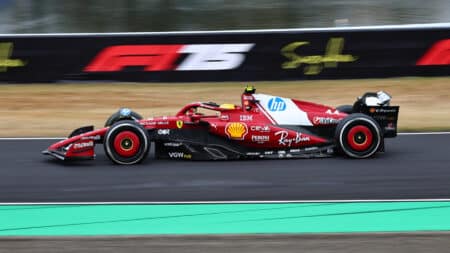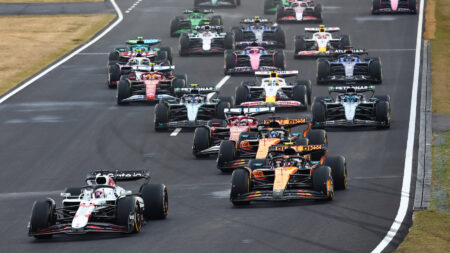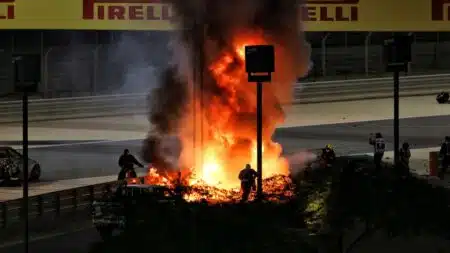
Tomorrow's F1 starting grid for the 2025 Bahrain Grand Prix
Oscar Piastri will be at the front of starting grid for the 2025 Bahrain Grand Prix after a dominant qualifying performance, that left him 0.4sec and five places ahead of…
New concept renders have given a glimpse of the future of Formula 1
As has been established for some time, 2021 sees the introduction of radically different aerodynamic regulations that will go considerably further in scope than next year’s wider but simpler front wing and revised rear wing.
The aim of both sets of changes is to make the cars more raceable, but it’s in 2021 that the big differences will be seen. In addition to improving the aerodynamics, the opportunity is being taken to update the aesthetics, based around the new-for-2021 bigger wheels and low-profile tyres.
Ross Brawn today presented some renderings of the direction they are thinking, as shown here.
“We want cars young people wanting to stick pictures of F1 cars up on their walls,” says Brawn. “The aesthetics of the car are very important. Although the primary objective has been to work on the raceability of these cars, but alongside that we want to see great looking cars. So we’ve had a designer working with the aero group as we’ve progressed.”
There’s actually been less visual progression in the last 40-odd years than in the single decade that preceded that
Some of the features being considered, such as the fairings around the wheels, serve aesthetic and practical purposes. “On an F1 car the open wheels make the air around them very dirty,” says Brawn, “and the fairings around the wheels that will improve the condition of the airflow for the car behind. Also, we’re looking at some shrouds around the rear wheels.”
The nature of the airflow coming off the car is of course key and Brawn was able to put some real-time numbers on the current cars. “Once they get to within two or three car lengths they lose up to 50 per cent of their [aero] performance. The tyres then degrade etc. At the moment, our simulations of the 2021 cars are showing they lose only 20 per cent, a substantial improvement.”
In terms of when the ’21 regulations will be finalised, the hope is that the FIA will be ready at the end of next year, after which we will have had a year to monitor the mildly revised 2019 cars. “These should give us a good barometer of whether we’re proceeding in the right direction,” says Brawn, “using readings from the actual cars.”
To even the most casual eye, the technological progress that was being made in earlier days was very evident. Compare a Maserati 250F to a Lotus 49, separated by a decade. Then from that to a Lotus 79, representing another decade. There’s actually been less visual progression in the last 40-odd years than in the single decade that preceded that – even though the performance has increased massively.
If the 2021 cars come out looking anything like this, they will at least be beginning to look like how we imagined the future would look like back in the past.
F1 released two concepts today, let us know your thoughts in the comments section below

Oscar Piastri will be at the front of starting grid for the 2025 Bahrain Grand Prix after a dominant qualifying performance, that left him 0.4sec and five places ahead of…

Ferrari is the Formula 1 team bringing the biggest update for its car in the Bahrain Grand Prix

The FIA says engine manufacturers have committed to the planned 2026 rules, with some modifications

Over the years, the Bahrain Grand Prix has offered plenty of on-track - and some off-track - drama. These are the top controversies from the Sakhir event